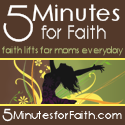Do You Write BIG?
MENTAL STATUS: "Smug". The Yankees aren't doing well. Mu-wah-ha-ha-ha. Yeah, I know Boston's winning streak ended yesterday, but as long as the Yankees lost, too, then it just doesn't matter.
Anyway, back to the topic at hand: Writing BIG.
No, I don’t mean do you write about Plus size heroines. I mean, are your stories "big"?
Last week Agent Kristen wrote an article over at Romancing the Blog about having a big enough story for a single title book. At one of my writing forums, this topic prompted a lot of interesting discussion.
If someone had asked me if my story was big enough for single title about a year ago, I would have thought, Huh? Sure. My story is 75,000 words. It’s big. It fits the requirement. That’s enough to try to sub it to an agent. End of story. Now please remove yourself from my presence as I compose my query letter.
Oh, how much I’ve learned since then.
Actually, I pitched one of my stories to Agent Kristen about a year ago. She thought it sounded too category, but she was willing (and nice enough) to take a look at thirty pages for me anyway. And then it was rejected. Big surprise. Of course, I can see where I went wrong with my thinking. My story was nowhere NEAR as “big” as it should have been for a single title. I realized that with more single title books I continued to read.
If for some reason you can’t see the difference yourself, Agent Kristen went on to give a few examples on how to tell if your story is big enough:
1. It can refer to a main story concept or idea that’s big enough to drive the story. **Okay, we’re off to good start with my story. Check.
2. It can refer to the emotional depth and complexity the writer taps into for the hero and heroine (and it’s much deeper than what a category line page restriction allows). **Eeww. Hmmm. No check.
3. It can refer to the writer’s ability to introduce secondary characters and a possible development of a secondary story that intertwines with the main plot. **Hmm. Subplot? Oh dear. What’s a subplot? No check.
4. It can refer to how the writer handles the point of view shifts between the hero and the heroine and how developed each narrative is before switching. **Check.
5. It can refer to how individual scenes are handled. Are they too dialogue-oriented (which tends to be more true in category romance) or are the scenes more complex with more description (and yet the addition of either doesn’t slow the plot)? That might be the hardest balance to capture when switching to single-title. **Ugh! I’m a dialogue oriented writer—thus far. Need practice. Need instruction. I’m sending out an S.O.S. No check.
6. It can refer to having more than one subplot. **Whoa, back up. I don’t even have ONE subplot. Sheesh. Now you’re asking for more? Obviously, no check.
7. It can refer to having a fully realized and developed villain or nemesis. **Whew. Does not apply. ( I think) Check.
So as you can see, I’ve learned a lot within the last year. I see the differences now. But seeing the differences and writing the differences are two different things. And I don’t think I can do it. Yet.
So for right now, I’ll stick with writing a category romance.
Do you write BIG stories?










































2 comments:
I write catagory too. For the most part, all I READ is big, but I don't think I have the attention span to write it. I know I'd get half way through and never finish. So, instead of having a pile of unfinished WIP, it's safer more me to write small.
I have just the opposite problem. My stories are too big, and I end up having to slash and burn sometimes as much as 20-30 pages!
That's one of the reasons I don't enter short story contests. Writing something short is impossible for me. Guess I'm just too long winded ...
Post a Comment